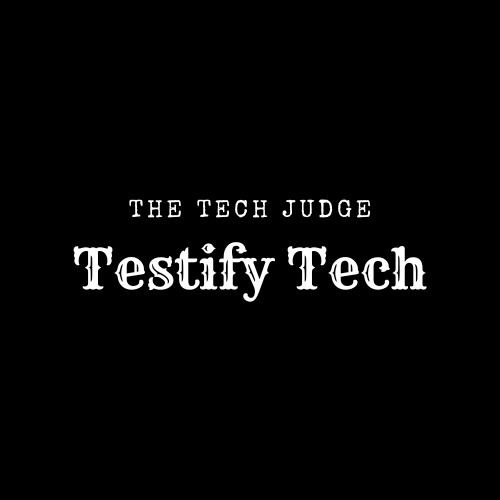Introduction:
Reverse engineering is a term often associated with the process of analyzing a product or technology to understand its inner workings, functionality, and design. While reverse engineering serves various purposes, such as product improvement, compatibility assessment, or security analysis, its legal and ethical implications have been a subject of debate. This comprehensive guide aims to shed light on the legality of reverse engineering, examining the associated laws, regulations, and ethical considerations. We will explore different perspectives, providing insights into the boundaries of reverse engineering and its impact on innovation, intellectual property, and the digital ecosystem.
Section 1: Understanding Reverse Engineering.
Reverse engineering involves the process of dissecting and analyzing a product or technology to gain insight into its components, functionality, and design principles. It allows individuals or organizations to explore and understand the inner workings of a system, often leading to improved compatibility, security analysis, or product innovation. By reverse engineering a product, one can identify how it functions, identify potential vulnerabilities, or enhance compatibility with other systems.
1.1 What is Reverse Engineering?
Reverse engineering is the process of examining and deconstructing a product or technology to understand its underlying principles, design, and functionality. It involves analyzing the various components, interfaces, algorithms, and code structures to gain insights into how the system operates.
1.2 The Purpose and Benefits of Reverse Engineering:
Reverse engineering serves several purposes and offers various benefits, including:
- Enhancing compatibility: Reverse engineering can help ensure that software or hardware components work together seamlessly by analyzing their communication protocols and interfaces.
- Product improvement: Reverse engineering can lead to product enhancement by understanding its strengths, weaknesses, and opportunities for optimization.
- Security analysis: Reverse engineering can help identify vulnerabilities or weaknesses in a product’s security measures, allowing for the development of stronger security protocols.
- Intellectual curiosity: Reverse engineering can satisfy the curiosity of individuals or researchers who want to gain a deeper understanding of a technology or product.
1.3 Common Techniques and Tools Used in Reverse Engineering:
Reverse engineering involves employing various techniques and tools to extract information from a product or technology. Some common techniques include disassembling code, analyzing network traffic, examining hardware components, and utilizing debugging tools. Additionally, specialized software tools, such as disassemblers, decompilers, and debuggers, aid in the reverse engineering process.
1.4 Semantically related question:
What are the industries that commonly employ reverse engineering techniques? Some industries that commonly employ reverse engineering techniques include software development, cybersecurity, automotive, aerospace, consumer electronics, and manufacturing.
Section 2: Legal Framework for Reverse Engineering:
To understand the legality of reverse engineering, it is important to consider the legal frameworks and intellectual property laws that govern such activities. Various laws and regulations, including copyright law, patent law, and trade secret law, come into play when assessing the legality of reverse engineering.
2.1 Intellectual Property Laws and Reverse Engineering:
Intellectual property laws protect the rights of creators and innovators and encompass copyrights, patents, and trade secrets. These laws grant exclusive rights to the creators of original works, inventions, or proprietary information.
2.2 Copyright Law and Reverse Engineering:
Copyright law protects original creative works, such as software, music, literature, and art. While reverse engineering itself does not violate copyright law, certain activities involved in the process may raise copyright concerns. For example, reproducing or distributing copyrighted materials without authorization can infringe upon copyright rights.
2.3 Patent Law and Reverse Engineering:
Patent law grants inventors exclusive rights to their inventions, preventing others from making, using, or selling the patented technology without permission. Reverse engineering can sometimes intersect with patent law, particularly when analyzing patented inventions. However, certain exceptions, such as fair use or experimental use, may apply.
2.4 Trade Secret Law and Reverse Engineering:
Trade secret law protects confidential business information, including manufacturing processes, formulas, or proprietary algorithms. Engaging in reverse engineering to extract trade secrets without authorization can infringe upon trade secret rights and potentially lead to legal consequences.
2.5 Semantically related question:
What legal protections are available for companies against reverse engineering? Companies can protect their intellectual property rights by implementing various strategies, such as patenting inventions, using non-disclosure agreements (NDAs) or licensing agreements, and taking legal action against unauthorized reverse engineering activities.
Section 3: The Legality of Reverse Engineering:
The legality of reverse engineering depends on the specific circumstances, purpose, and applicable laws. While reverse engineering is generally permissible under certain conditions, it is essential to consider the legal exceptions and limitations that may exist.
3.1 Reverse Engineering for Compatibility and Interoperability:
Reverse engineering for the purpose of achieving compatibility and interoperability is often considered lawful. This includes reverse engineering software or hardware to ensure they work together effectively without infringing upon copyright or patent rights.
3.2 Reverse Engineering for Security Research and Vulnerability Analysis:
Reverse engineering for security research purposes is often viewed favorably as it helps identify vulnerabilities and weaknesses in software or systems. Many countries have enacted laws to protect security researchers who engage in responsible reverse engineering activities to enhance cybersecurity.
3.3 Reverse Engineering for Education and Personal Use:
Reverse engineering for educational or personal use is generally permitted, provided it does not infringe upon intellectual property rights or involve unauthorized distribution or commercialization of the reverse-engineered product.
3.4 Semantically related question:
Can reverse engineering be considered fair use under copyright law? Fair use is a legal doctrine that allows limited use of copyrighted material without permission from the copyright owner. While reverse engineering itself may not fall under fair use, certain activities associated with reverse engineering, such as analysis, testing, or research, may be considered fair use under specific circumstances.
Section 4: Ethical Considerations in Reverse Engineering:
Apart from the legal aspects, ethical considerations play a significant role in determining the responsible and acceptable practices of reverse engineering. Respecting intellectual property rights, adhering to licensing agreements, and promoting responsible disclosure are crucial ethical considerations.
4.1 Balancing Innovation and Intellectual Property Rights:
The ethical challenge lies in striking a balance between fostering innovation and respecting intellectual property rights. While reverse engineering can drive innovation, it is essential to acknowledge and honor the efforts and rights of creators and innovators.
4.2 Respecting Licensing and Terms of Service Agreements:
Reverse engineering should be conducted in compliance with licensing agreements, terms of service, and contractual obligations. Violating such agreements can lead to legal consequences and damage professional reputations.
4.3 Disclosure and Responsible Vulnerability:
Reporting When identifying vulnerabilities or weaknesses through reverse engineering, responsible disclosure is paramount. Security researchers should follow established guidelines and responsible disclosure practices to minimize the potential harm caused by vulnerabilities.
4.4 Semantically related question:
What ethical guidelines should be followed while conducting reverse engineering activities? Some ethical guidelines to consider while engaging in reverse engineering activities include obtaining proper authorization, respecting intellectual property rights, adhering to licensing agreements, promoting responsible disclosure, and maintaining professional integrity.
Section 5: Case Studies and Precedents:
Examining past legal cases and precedents can provide insights into how courts have interpreted the legality of reverse engineering and its implications for innovation, intellectual property, and the technology industry.
5.1 Landmark Cases Involving Reverse Engineering:
Explore notable legal cases, such as the Sony PlayStation v. Connectix Virtual Game Station case or the Google v. Oracle America case, to understand the legal precedents and their impact on reverse engineering practices.
5.2 The Impact of Court Decisions on Reverse Engineering:
Court decisions regarding reverse engineering have shaped the legal landscape and influenced the boundaries and scope of reverse engineering practices. Understanding these precedents is crucial for individuals and organizations engaging in reverse engineering activities.
Conclusion:
The legality of reverse engineering is a complex and nuanced topic. While it is generally permitted under specific circumstances, it is essential to navigate the legal and ethical considerations carefully. By understanding the legal frameworks, respecting intellectual property rights, and adhering to ethical guidelines, individuals and organizations can engage in responsible and lawful reverse engineering practices. Balancing innovation, intellectual property protection, and responsible disclosure is key to maintaining a healthy and thriving technological ecosystem.
Note: It is important to consult with legal professionals or experts specializing in intellectual property law to obtain accurate and up-to-date information regarding the legality of reverse engineering in specific jurisdictions.



